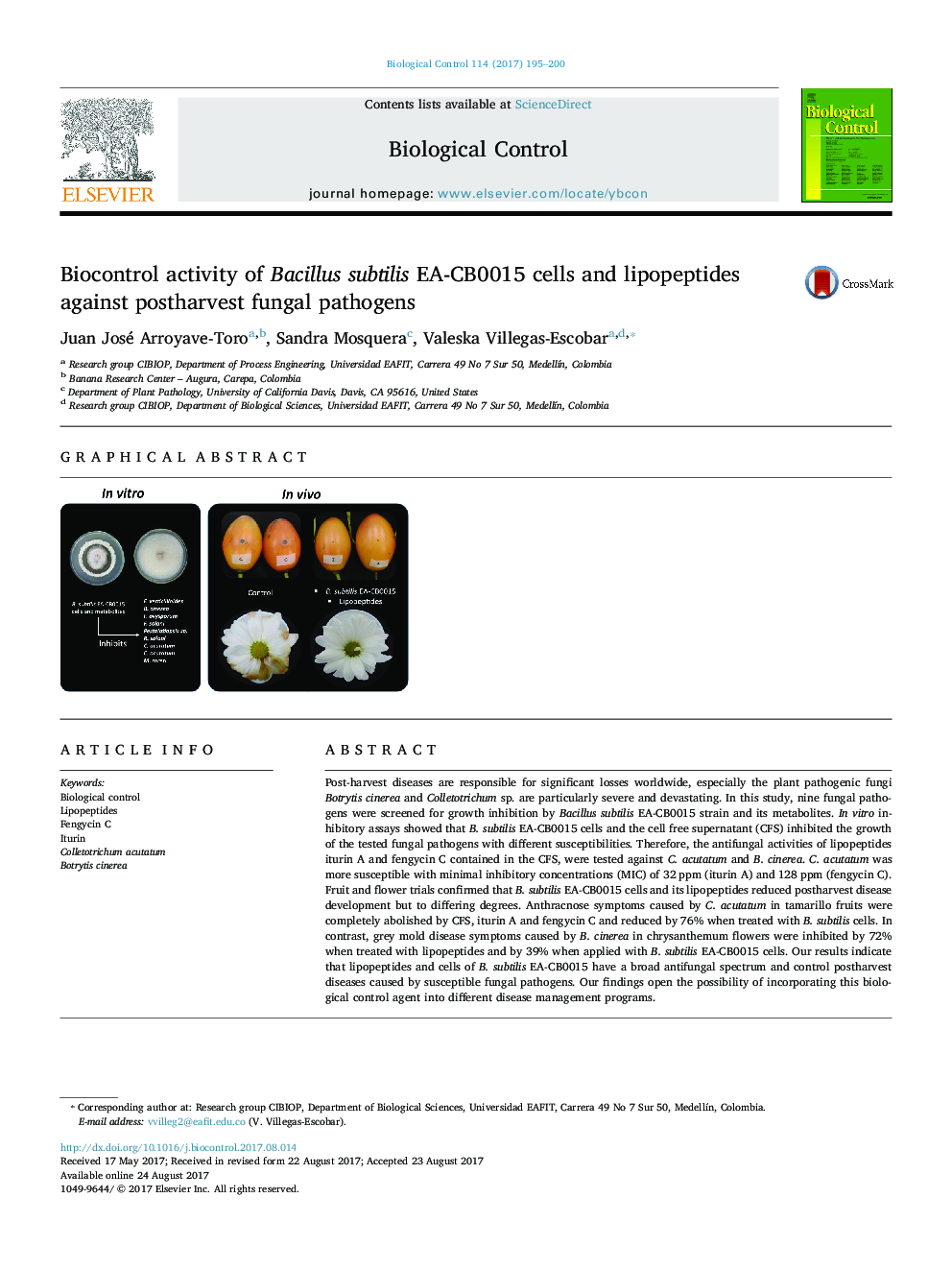| Article ID | Journal | Published Year | Pages | File Type |
|---|---|---|---|---|
| 5760741 | Biological Control | 2017 | 6 Pages |
â¢B. subtilis EA-CB0015 inhibits the growth of different fungal pathogens.â¢Bs EA-CB0015 iturin A and fengycin C, inhibit C. acutatum and B. cinerea.â¢C. acutatum is more susceptible to lipopeptides than B. cinerea.â¢Anthracnose in tamarillo fruits was reduced by EA-CB0015 cells and lipopeptides.â¢Grey mold in chrysanthemum flowers was reduced by EA-CB0015 cells and lipopeptides.
Post-harvest diseases are responsible for significant losses worldwide, especially the plant pathogenic fungi Botrytis cinerea and Colletotrichum sp. are particularly severe and devastating. In this study, nine fungal pathogens were screened for growth inhibition by Bacillus subtilis EA-CB0015 strain and its metabolites. In vitro inhibitory assays showed that B. subtilis EA-CB0015 cells and the cell free supernatant (CFS) inhibited the growth of the tested fungal pathogens with different susceptibilities. Therefore, the antifungal activities of lipopeptides iturin A and fengycin C contained in the CFS, were tested against C. acutatum and B. cinerea. C. acutatum was more susceptible with minimal inhibitory concentrations (MIC) of 32Â ppm (iturin A) and 128Â ppm (fengycin C). Fruit and flower trials confirmed that B. subtilis EA-CB0015 cells and its lipopeptides reduced postharvest disease development but to differing degrees. Anthracnose symptoms caused by C. acutatum in tamarillo fruits were completely abolished by CFS, iturin A and fengycin C and reduced by 76% when treated with B. subtilis cells. In contrast, grey mold disease symptoms caused by B. cinerea in chrysanthemum flowers were inhibited by 72% when treated with lipopeptides and by 39% when applied with B. subtilis EA-CB0015 cells. Our results indicate that lipopeptides and cells of B. subtilis EA-CB0015 have a broad antifungal spectrum and control postharvest diseases caused by susceptible fungal pathogens. Our findings open the possibility of incorporating this biological control agent into different disease management programs.
Graphical abstractDownload high-res image (143KB)Download full-size image
